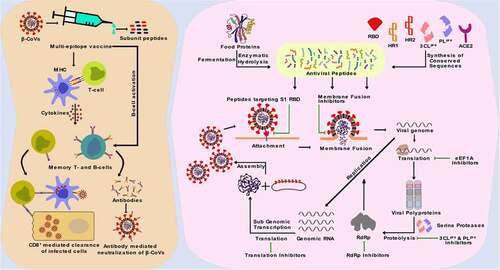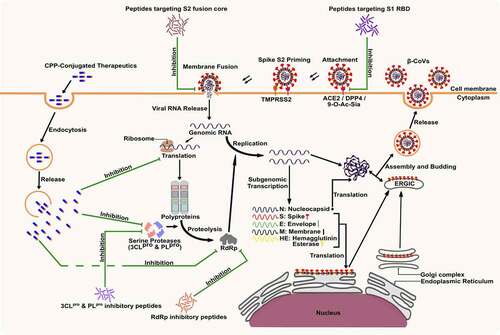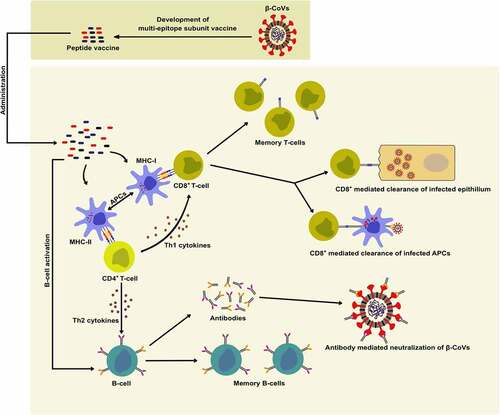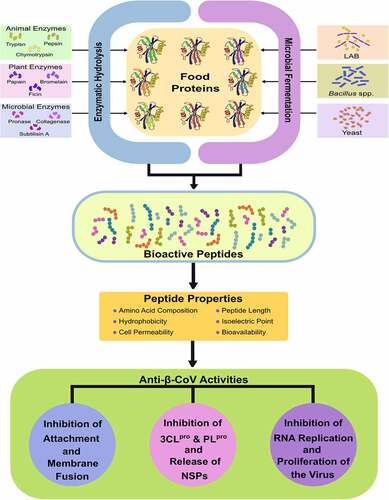Figures & data

Figure 1. β-CoV lifecycle and potential inhibitory roles of peptides. The targets for the inhibition of β-CoV infection and proliferation include the viral spike protein which binds to the host cell receptors and facilitates entry of the virus into cell cytoplasm, the host translational machinery that is used for the synthesis of viral polyproteins, the viral serine proteases that process the release of viral structural proteins and enzymes, and the viral RNA dependent RNA polymerase (RdRp) enzyme that facilitates the replication of viral genomic RNA.

Figure 2. Potential role of peptide-based multi-epitope subunit vaccines in eliciting an adaptive immune response against β-CoV. Peptides can be presented by the major histocompatibility complex (MHC) molecules as antigenic B- and T-cell epitopes which can elicit the clearance of infected epithelium and antigen-presenting cells (APCs), formation of antibodies for the neutralization of viral particles, and result in the generation of memory B- and T-cells.

Table 1. Inhibitory potential of natural and synthetic peptides against β-CoVs
Figure 3. Potential anti-β-CoV activities of bioactive peptides released from food proteins by enzymatic hydrolysis and microbial fermentation. In silico analyses have demonstrated that food-derived peptides show potential inhibition of β-CoV attachment, entry, replication, and proliferation that is dependent on the amino acid composition, peptide length, bioavailability, and physicochemical properties of the peptides.

